There is growing pressure for change!
- Canadians and Parliamentarians demand greater accountability and
transparency
- Commitments to change the way government works:
- Increased role for Parliament
- Launch of ongoing Expenditure Review Committee (ERC) government-wide reviews
and Budget 2004 reallocation targets
- Increased linkage between departments; collaboration alignment and
integration of priorities along horizontal initiatives
- A holistic approach is needed to ensure that management tools and
information align with inputs as well as outputs
Strengthened management is critical to advancing these policy priorities.
Strengthened management means changes in the way we do business...
|
| Current State |
Future State |
|
Management focus largely on dollars and inputs:
- Weak performance information; tied to inputs not outputs
- Reallocation and budgeting done on an incremental basis
- Department based hierarchies
|
Management focused more on priority based outcomes
- Information systems link resources to results
- Continual review and realignment of resources to priorities
- Branch based hierarchies
|
Planning and information focussed largely at departmental
level:
- Little standardized information to support horizontal management
- Challenges in collaboration across departments on priorities
|
Promote 'government-wide' management system:
- Comprehensive horizontal information
- Support for collective planning and resource (re)allocation
|
|
Information is a key driver in this change. How we manage and use information is key!
Change means adding greater value to information
- Results must be linked to priorities
- Information from many sources must be linked for more analytical flexibility
- Analytical tools are needed by managers and analysts
- Integrated information is required with a higher level of detail
- Information driven, horizontal analysis and reporting, and results
based management is a priority for TBS
- Pressure to have the capacity to reallocate from low to high priorities
is increasing
"...the government is undertaking significant new initiatives to
strengthen financial management, oversight and accountability in Departments and
agencies". (Budget 2004)
Change also means better management of information
Limitations exist in the way that we currently manage information. Not only
must we update our aging legacy systems:
- Information to perform the Budget Office Function is physically scattered
across many different stakeholders (e.g., Treasury Board Secretariat,
Departments, Other Central Agencies, etc.)
- There is no common key that links our information holdings
- There are few information standards and quality control
must be improved
- Technology, and how we use it does not reflect policy. Systems do not meet
the needs of a more horizontal approach to management
Adding greater value to information, and better information management will
serve to promote transparency, accountability and informed decision-making.
What is the EMIS Vision?
To modernize management of the Public Sector, by providing enterprise-wide
information for decision-making.
Managers and decision makers at all levels require integrated and timely
information for decision-making and reporting.
EMIS is the information system that responds to this requirement by linking
the government's information on priorities, planned and actual expenditures
and results to improve decision-making and analytical capacity.
EMIS will align information on priorities, planned and actual expenditures
and results

- The Budget Office is a shared responsibility of Treasury Board Secretariat (TBS),
Privy Council Office (PCO) and Finances.
- The key priorities of the Budget Office are Fiscal Discipline, Allocation
Efficiency and Operational Efficiency.
- TBS is strategically positioned to support the allocation and operational
efficiency component.
EMIS will provide an information framework...
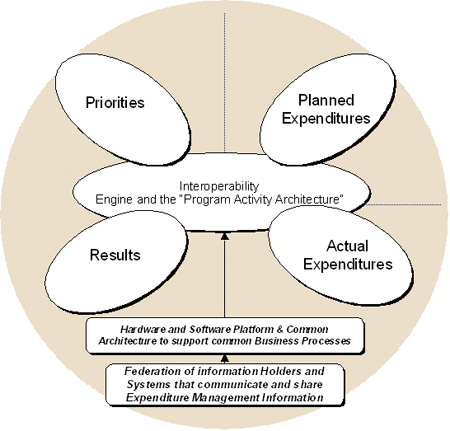
...providing a framework to align and share information, that often already
exists on Priorities, Planned and Actual Spending and Results being achieved
around a Program Activity Architecture.
At the heart of this framework is the Program Activity Architecture (PAA)...
Which ensures that financial and non-financial information on priorities,
plans, actuals and results is aligned across departments as well as within
departments. EMIS acts as a steward for the new holistic managerial environment.
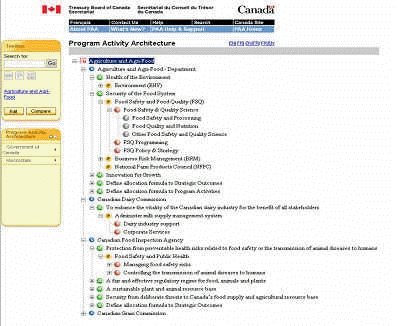
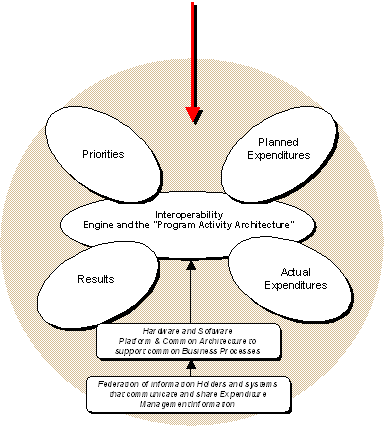
The PAA is the authoritative list of program activities that reflects how
government organizations manage and budget their program resources to achieve
their program performance commitments. The PAA also demonstrates how program
activities, sub-activities and sub-sub-activities are mapped to Strategic
Outcomes. The PAA is the basic structural foundation upon which
appropriation-dependent organizations will report to both TB and Parliament. It
is also the model that we will build the "Estimates" around.
EMIS will align key government-wide business processes...
...to the Program Activity Architecture.
Applications already under development include:
- The Estimates Process
- Annual Reference Level Update (ARLU)
- Main Estimates
- Supplementary Estimates
- Treasury Board Submission Process
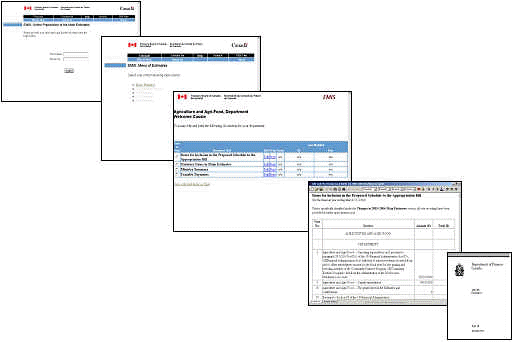
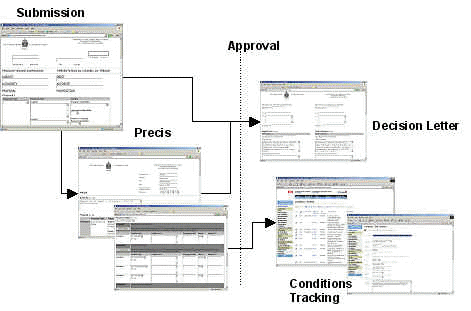
...and finally, EMIS will ensure that Horizontality is more than just a
By-Product

- The ability to analyze priorities, planned and actual expenditures and
results horizontally is key
- Aligning information around the PAA will allow for sharing and comparing
information on Horizontal Issues across departments
A Horizontal Example
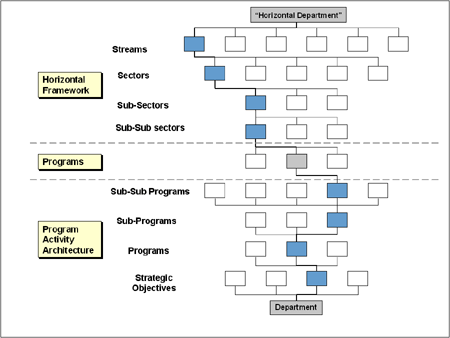
|
